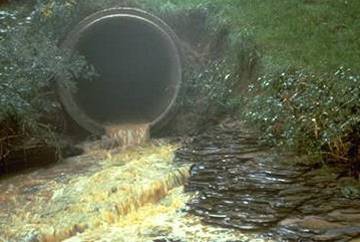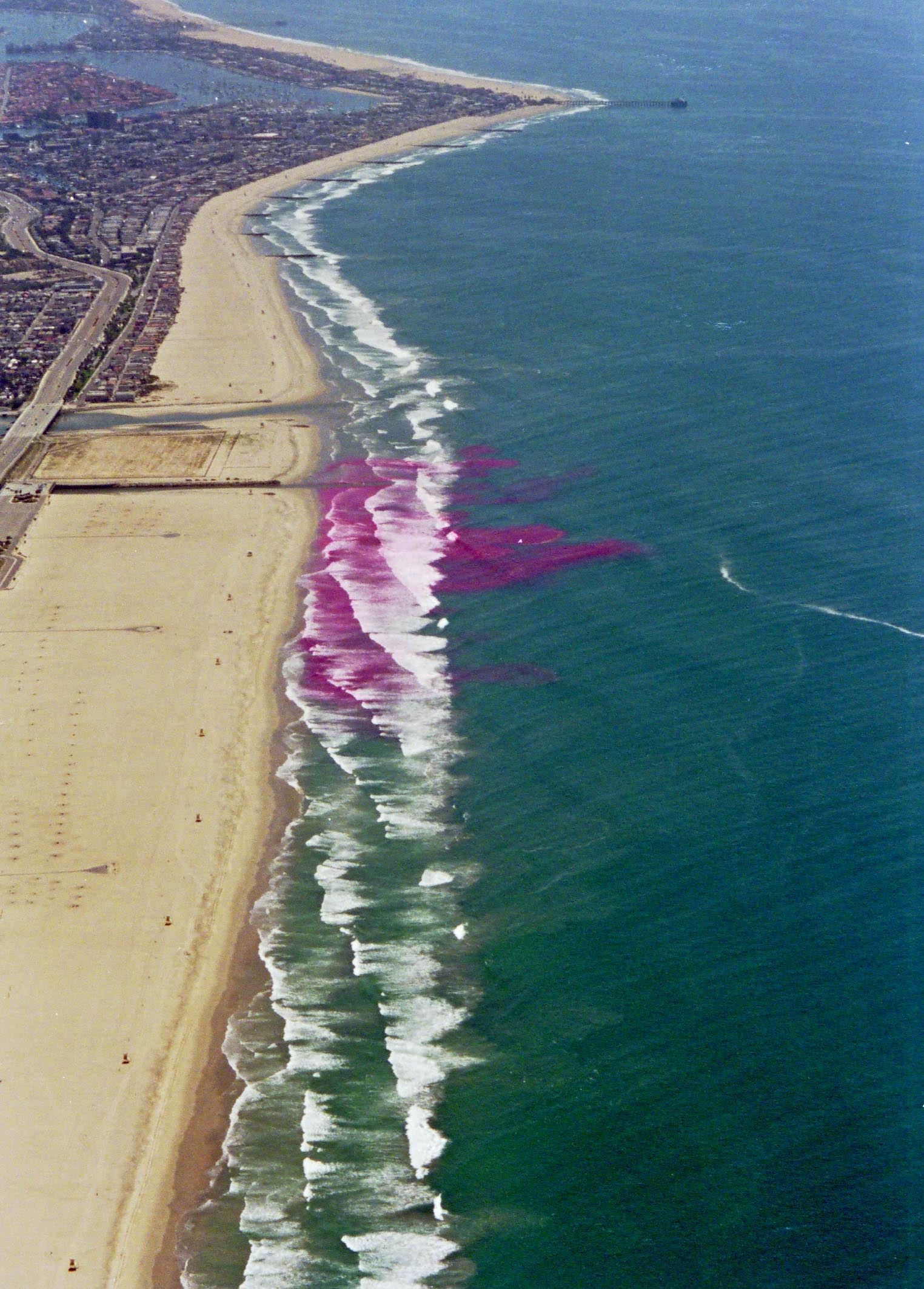 |
 |
 |
| Storm Drain T. Garrison text |
Fecal Coliform Source EPA image |
Dye from Talbert Marsh B. Jones |
In summer of 2001, the OCSD had to decide whether or not to upgrade their sewage plant, based only on the information you have received. By a narrow vote, 13/12, they decided to start the upgrade. As the upgrade will take several years, as well as hundreds of millions of dollars, they also decided to start chlorinating the sewage to kill the bacteria.
There were other scientists studying bacterial contamination on beaches, besides the ones hired by OCSD. Within a few months, they started talking about a storm drain that led from Newport Beach into the mouth of Santa Ana River. You may wish to consult the map again; Newport Beach is a wealthy neighborhood just southeast of Huntington Beach, and the Santa Ana "River" is a concrete-lined channel. Dog walkers in Newport Beach would curb their dogs and leave the feces in the gutter, whence it washed down a storm drain and into the channel. In the absence of rain, the feces piled up, and the bacteria flourished.
The first picture on this page is a storm drain, conveniently showing the ocean in the near background. Take a look at storm drains around your neighborhood. Have they been marked with fish stencils or signs that say "no dumping"? They should be, because water that runs into storm drains is not treated at all (except in a few cities). Usually, it just dumps into the nearest body of water. The second picture came up when I searched the internet for pictures of fecal coliform bacteria ... enough said?
You may be wondering how the feces that pile up in a dry concrete channel get into the ocean. The answer is tides. During small-amplitude neap tides, the high water does not reach the mouth of the storm drain, but during large-amplitude spring tides, channel is flushed with ocean water. Now think back to the timing of bacterial contaminations - they occured during large amplitude tides. By the way, if you're walking on the beach with your honey under the full moon, that beach will have large amplitude tides -- I do not recommend skinny dipping under the full moon.
Once the bacteria enter the ocean, they are carried along-shore by the waves. The last picture on this page was
taken from an airplane, looking down the coast above Huntington Beach. Newport Beach is at the top of the page, and
the channels for the Santa Ana River and Talbert Marsh drainage cross the beach just this side of Newport Beach.
The bright red dye was dumped into the Talbert Marsh to see whether pollution from the marsh could travel along
the beach. The dye is spreading toward the bottom of the page, and Huntington Beach. So it sure looks like the bacteria
from the storm drain in the Santa Ana River could contaminate Huntington Beach.
 |
 |
 |
| Storm Drain T. Garrison text |
Fecal Coliform Source EPA image |
Dye from Talbert Marsh B. Jones |
The OCSD has also been tracking bacterial concentrations in their outfall since they started chlorinating. Water in the sewage plume is now clean enough to swim in. And the beach? It still gets contaminated every time the moon is full. So the sewage outfall is pretty much exonerated as a source for beach contamination.
| Back to Decisions | Huntington Beach | The impact of one dog's feces |